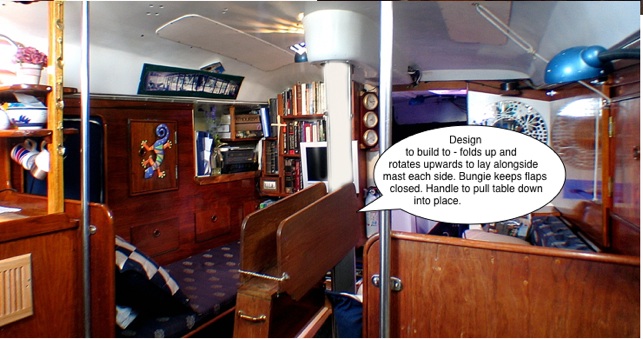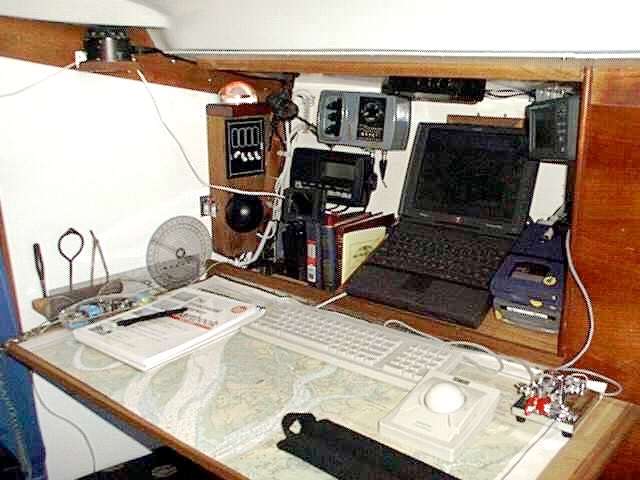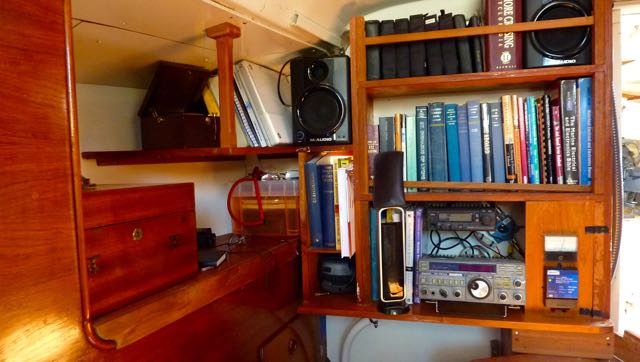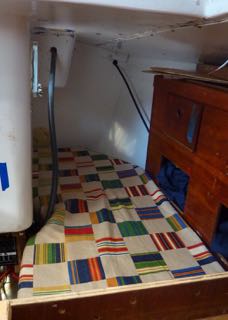I designed this table which folds against the mast.


This cleared the floor area. At the beginning of the Caribbean trip the interior looked like this. The panels in the overhead give acees to to the winch mounting bolts. The interior overhead is smooth, and is a filling material over he glass roving. All nuts from bolts holding deck fittings are flush with the overhead, There is no liner.
Forward of the bookcase is the well ventilated heads, and sail stowage. The dinghy motor is stowed here when at sea. This area has a potential of getting wet if the hatches are open for sail changes in rough weather, so we don’t keep anything up here that might suffer from dampness. There is a holding tank and Lectrasan system fwd. And two flexible water tanks. The dinghy can be stowed here if we leave the boat for a while.
The floor is level throughout the boat, really important at night in a sea way. Floorboards are slatted teak grates which lift with no fastenings to give access to the bilge pump, keel bolts, grounding wires and so on. There are no silly little hatches to peer into. The entire hull can be examined withoyt having to unscrew anything.
Under the starboard bunk is a monel water tank which has now become a storage for electronics like VHF, GPS systems in the event of a lightning storm. The tank creates a Faraday cage for the electronics.


To the left on the port side is the radio room which has its own battery and solar system. It is isolated from the ground system of the boat and from all electrical devices. This reduces interference for weather faxing reception. It is at least ten feet from the inverter. The radio room has its own table and this is a comfortable place to chat, and compute.
On the left is the sextant (always nice to have) and stowage for manuals.
The 3/4 ton has 17 lockers for stowage above the berths and 11 under the berths. Plus bin stowage up fwd. There is a huge locker accessed from the aft deck that can hold several sails, or food, spare parts etc. I added the book case in Grenada.









